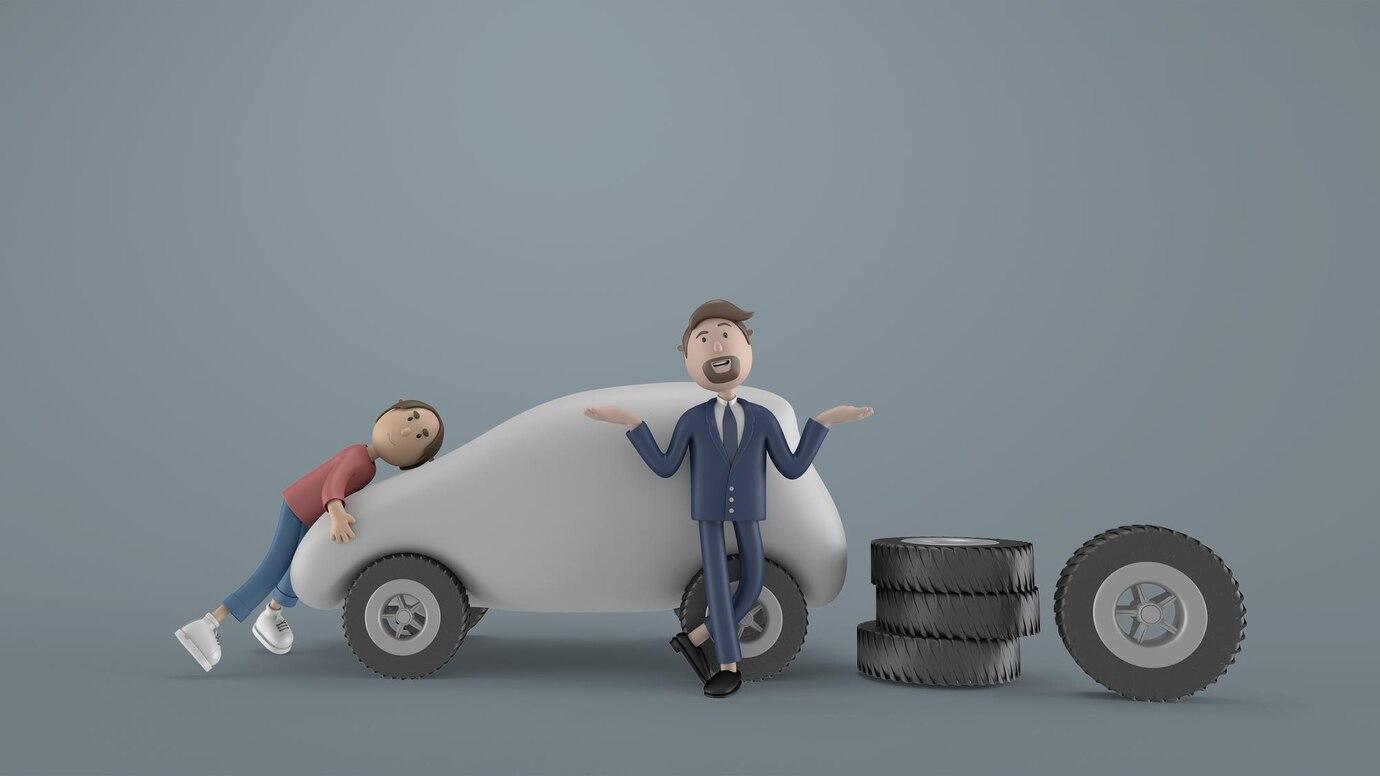In recent years, the automotive industry has undergone a remarkable transformation, driven not only by engineering innovations but also by advances in digital visualization. One of the most significant technological developments fueling this change is the use of high-quality 3D animation solutions. From product conceptualization to marketing, 3D animation is now an essential tool for automotive brands to captivate audiences, simplify complex designs, and create emotional connections with consumers.
Let's explore how the automotive sector is increasingly embracing 3D animation, particularly through 3d product animation services and even techniques borrowed from 3d medical animation services, and why it has become indispensable in product advertisement examples across the industry.
The Rise of 3D Animation in Automotive Visualization
Traditionally, car companies relied heavily on static images, physical prototypes, and conventional video ads to showcase their latest models. While effective to some extent, these methods often fell short in delivering the depth, intricacy, and excitement that consumers seek. High-quality 3D animation solutions, however, have revolutionized this landscape.
Through 3D animation, brands can:
-
Showcase the internal mechanics of a car
-
Demonstrate performance features dynamically
-
Present a vehicle in different environments and lighting conditions
-
Customize color, materials, and accessories in real time
This level of immersive storytelling allows customers to experience products long before they physically touch them, dramatically enhancing the decision-making process.
The Role of 3D Product Animation Services
Automotive companies are increasingly investing in 3d product animation services to create stunning visual narratives around their vehicles. These services enable brands to build highly detailed models of cars, trucks, motorcycles, and even futuristic concepts.
Some of the key applications include:
Virtual Prototyping
Before a physical prototype is even built, engineers and designers can use 3D animation to simulate a vehicle's design. This reduces costs and speeds up the development process.
Feature Demonstrations
Whether it's a state-of-the-art suspension system, advanced safety features, or hybrid powertrains, 3D animations allow brands to break down complicated systems into digestible and engaging content.
Virtual Test Drives
Through animated simulations, potential customers can virtually "test drive" vehicles, experiencing their handling, acceleration, and features in a controlled digital environment.
By utilizing high-quality 3D animation solutions, automotive marketers can create visually compelling product advertisement examples that resonate deeply with tech-savvy consumers.
Borrowing Techniques from 3D Medical Animation Services
Interestingly, some automotive companies are now applying storytelling techniques borrowed from 3d medical animation services. In the medical field, complex biological processes are simplified and visualized with utmost clarity through 3D animation. Similarly, automotive brands are using these techniques to:
-
Dissect complex mechanical operations (like combustion engines or electric drivetrains)
-
Highlight the safety features with detailed animations of crash simulations
-
Visualize fluid dynamics (airflow over a vehicle, oil circulation, etc.)
This cross-pollination of techniques has elevated the quality of automotive animations, making technical information more accessible to a broader audience.
Benefits of High-Quality 3D Animation Solutions for Automotive Brands
Enhanced Storytelling
3D animations enable companies to create emotionally resonant stories around their vehicles. Instead of focusing solely on technical specifications, brands can build narratives that emphasize lifestyle, innovation, and adventure.
Better Customer Education
With detailed and dynamic visual content, customers can better understand the unique selling points of a vehicle. This leads to more informed purchasing decisions and reduces buyer's remorse.
Improved Marketing ROI
High-quality 3D animation solutions often deliver better engagement metrics compared to traditional media. They drive higher click-through rates, longer video views, and increased social sharing.
Cost Efficiency
While initial animation production costs can be significant, 3D assets can be repurposed across multiple platforms—from web experiences and TV commercials to social media and trade shows—maximizing return on investment.
Global Accessibility
Animations transcend language barriers. Visual demonstrations of features like autonomous driving or regenerative braking are universally understood, allowing brands to reach global audiences effectively.
3D Animation in Product Advertisement Examples
Several major automotive companies have set benchmarks with their creative use of 3D animation in marketing. Some notable product advertisement examples include:
BMW's Concept Car Launches
BMW often uses high-quality 3D animation solutions to unveil concept cars, showcasing futuristic designs and innovative technologies without the need for physical models.
Tesla's Autopilot Demonstrations
Tesla relies heavily on animated sequences to explain how its autopilot system works, using simplified yet detailed 3D animations to reassure and educate consumers.
Audi's Quattro Drive System
Audi has produced several impressive 3D animations illustrating the benefits of its Quattro all-wheel drive system, highlighting the technical intricacies that would be difficult to capture through live footage alone.
These examples clearly show how 3d product animation services are no longer a luxury but a strategic necessity for brands seeking to stand out in a competitive marketplace.
Future Trends in Automotive 3D Animation
As technology continues to evolve, so will the use of 3D animation in the automotive industry. Some emerging trends to watch include:
Real-Time Rendering
Powered by game engines like Unreal Engine, real-time rendering enables instant visualization changes—perfect for customization apps or interactive showrooms.
Augmented Reality (AR) and Virtual Reality (VR) Integration
With AR and VR, customers can explore a vehicle's interior, interact with features, and even simulate driving experiences, all powered by high-quality 3D animation solutions.
AI-Enhanced Animations
Artificial intelligence will make it easier to automate certain aspects of animation production, reducing time and cost while enhancing realism.
Increased Personalization
Future marketing campaigns will use 3D animations customized for individual users based on their preferences and browsing behavior, leading to highly targeted advertising.
Challenges and Considerations
While the benefits are immense, there are also challenges:
-
High Production Costs: Developing photorealistic 3D animations requires skilled professionals and significant investment.
-
Complexity: Automotive products are inherently complex, demanding meticulous attention to detail in animations.
-
Technology Dependence: As technology advances, staying up to date with the latest tools and techniques becomes critical.
However, the payoff in terms of customer engagement and brand differentiation often justifies the investment in 3d product animation services.
Conclusion
The automotive industry's growing reliance on high-quality 3D animation solutions is not just a passing trend—it represents a fundamental shift in how brands communicate with their audiences. By leveraging 3d product animation services, and even adapting techniques from 3d medical animation services, car companies can present complex technologies with clarity and appeal, creating compelling product advertisement examples that drive customer interest and loyalty.
As the technology matures and becomes more accessible, we can expect even smaller automotive brands to harness the power of 3D animation, bringing a new era of innovation, engagement, and storytelling to the industry. Those who invest wisely in 3D visualization today will undoubtedly be the brands steering the future of automotive marketing tomorrow.









Share this page with your family and friends.